| The concept of substituting a point into an equation to find missing constants is one I have been pushing as it has wide applications across different functions types. This is the method we use to find the equation of a straight line when we know points. So it seems natural that this is also the preferred method. I also like the fact that it helps students realise the connection between the coordinate and the equation. Whilst going through this example I picked up on the difference between -4² and (-4)² and why it is the former in this case. At the end I also said there was a third different equation we could have used, and asked what it was. A couple of students spotted that they could have used the vertex coordinate instead of the roots. |
| Similar to above (in actuality it is just another version of a simultaneous equation), but making use of the formula for the equation of the axis of symmetry (they are given this in the formula booklet for IB Mathematical Studies), one student noted that as they know the value of a, this is fairly straightforward. But they got stuck at finding the value of c, which they had worked out by the time we went through method 1. |
| This links to the work we did previously on Root Form, but many students could not recall the details of how to do this. I modeled the answer, firing a few questions on bits I knew they could do. I told them this is the method that I personally would choose to answer the question, but recognised that it relied on confidence in algebra (something they do not have). |
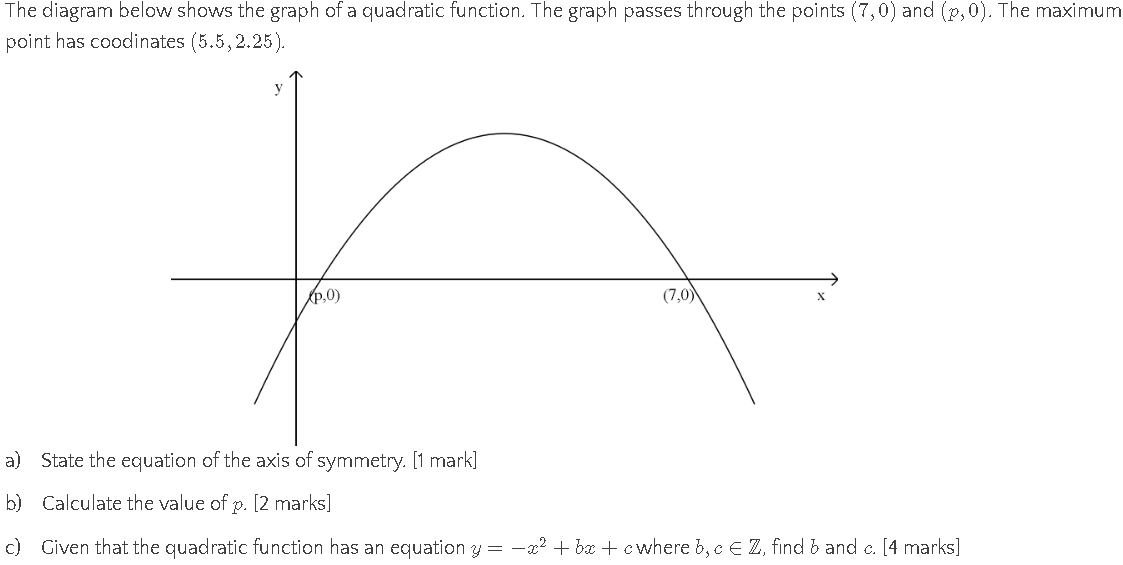
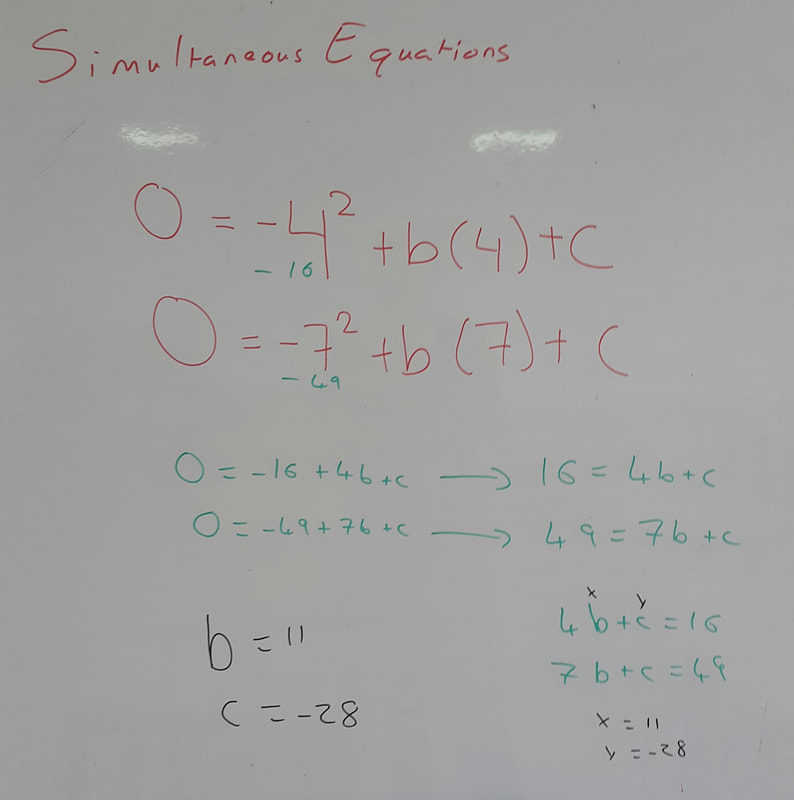
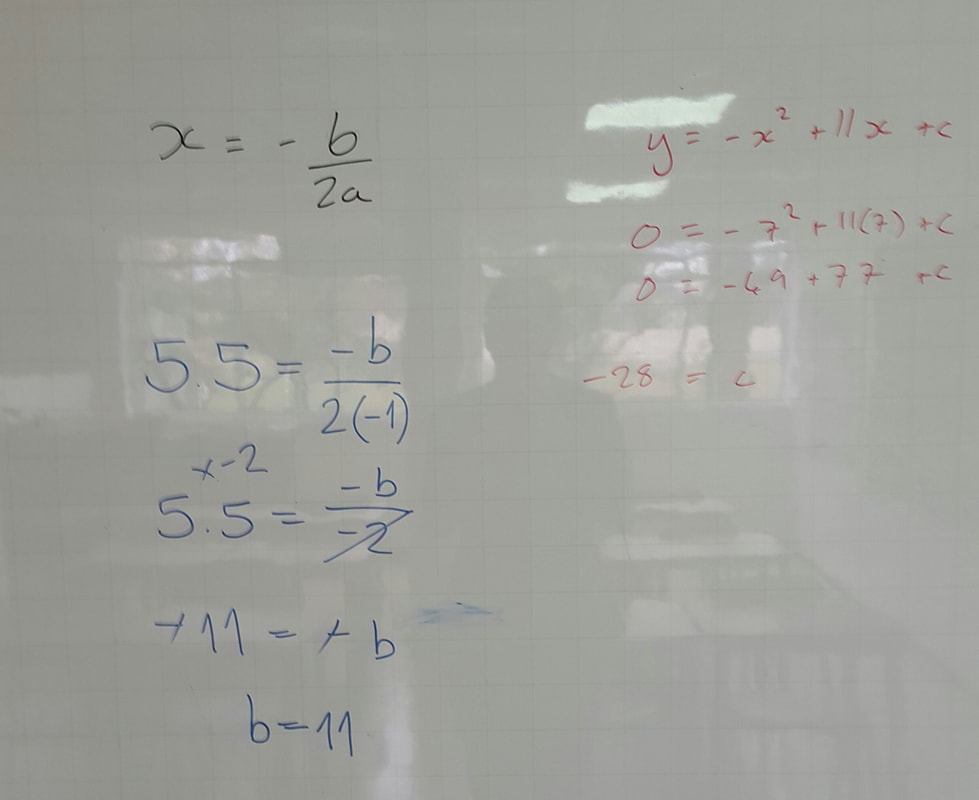
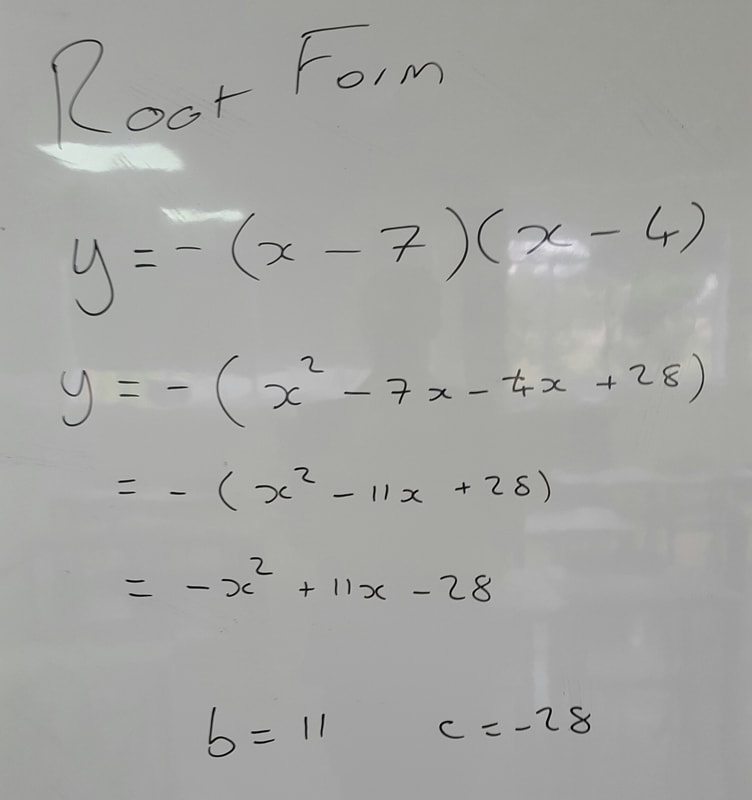
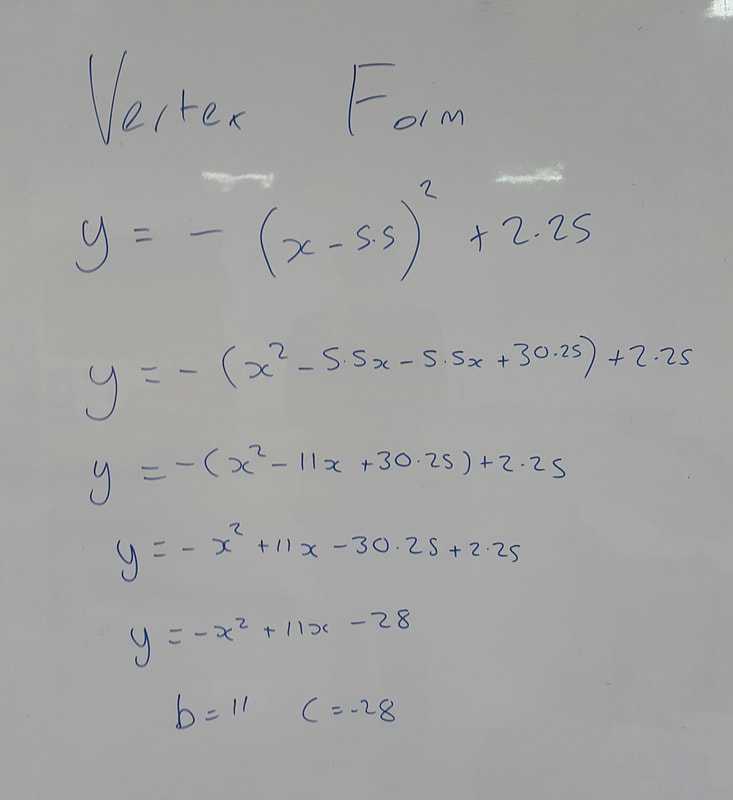
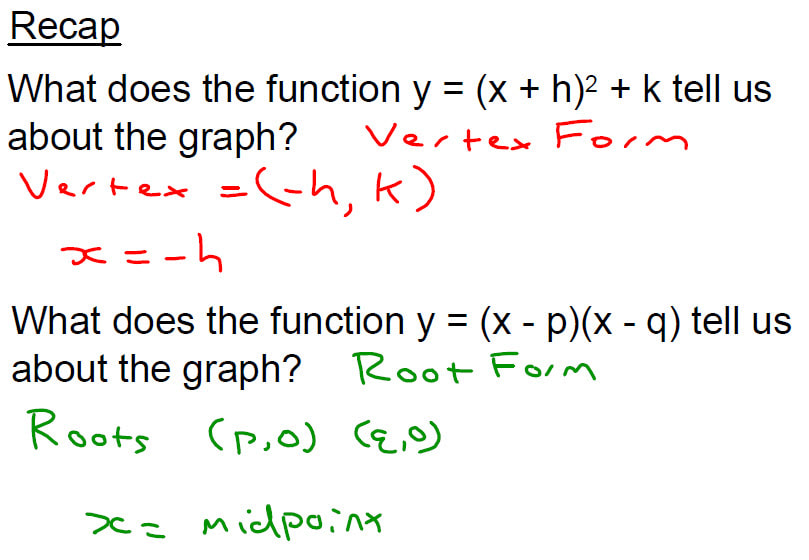
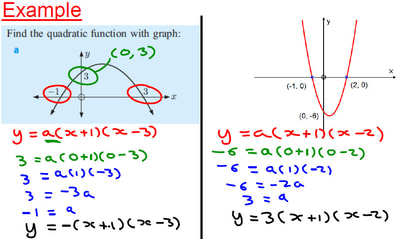
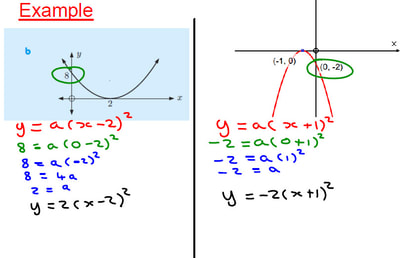
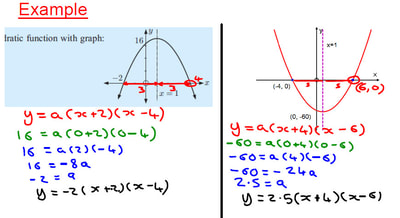
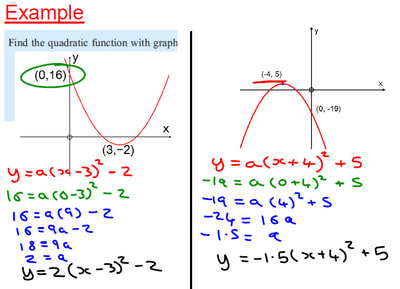
 RSS Feed
RSS Feed
